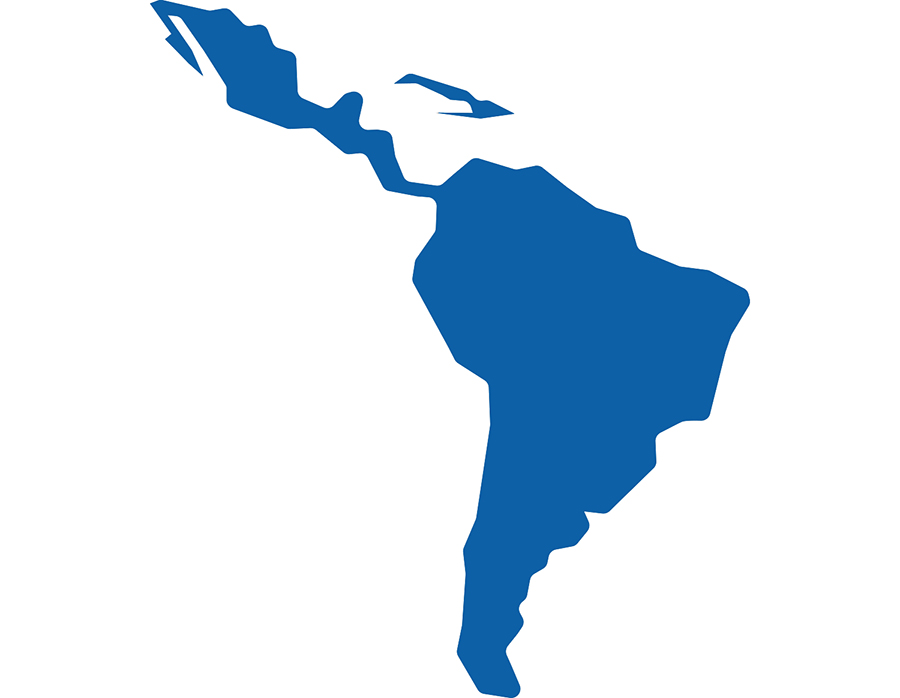The State of the Latin American Market for Medical Devices

Across most of its constituent countries, Latin America’s medical device market has continued to expand, even in the face of general economic stagnation. Since China’s slump in 2015, Latin American exports to China dropped precipitously, affecting most aspects of the economy across most Latin nations. You wouldn’t know it by looking at the medical device industry. A set of pressures, most notably a strong need for current technological healthcare solutions, has conspired to drive demand. In response—and contributing to market favorability in a virtuous cycle—many Latin American governments have passed legislation to ease the process for U.S. and European medical technology to penetrate their markets.
Growth: A Response to Need
Per a recent study by the Population Reference Bureau (PRB), the four major non-communicable diseases (cardiovascular disease, most cancers, diabetes and chronic respiratory diseases) will cause 81% of deaths in Latin America by 2030. Understandably alarmed, Latin American leaders have launched a number of initiatives aimed to preempt such high morbidity. Within the past five years, countries have responded with programs such as Plan Nacer in Argentina, the tax-funded Unified Health System in Brazil, and the Social Health Insurance program in Chile. Consequently, Central and South American nations have sharply increased per capita spending on healthcare. For the six-year 2008–2014 interval, the World Bank reports that per-capita healthcare expenditures increased significantly across Latin America. While Argentina’s outlay decreased during that time, Guatemala’s increased by 27%, Brazil’s by 31%, Chile’s by 54%, Columbia’s by 58%, Uruguay’s by 95%, Paraguay’s by 115%, Bolivia’s by 138%, and Ecuador’s by 139%.
Insufficient domestic medtech production across Latin America leaves an open market for U.S. and European exporters. Compounding the problem, a floundering public health sector forces providers into the private market. Additionally, governments increasingly look to private enterprises for help since they lack the GDP to implement their aggressive health agendas. Across Latin America, in fact, governments have shown eagerness to woo foreign suppliers. Brazil, for example, opened their hospitals to foreign investors last year.
Booming Subsectors
Some of the more noteworthy medical device growth sectors include breathing aid technology, x-ray and vital sign equipment. In Mexico, for example, the market for breathing aid technology is growing at a rate of 20% per year. Meanwhile, in Colombia the x-ray technology market expands at 40% per year and is currently worth $31 million. In Brazil, vital sign medical equipment expenditure is a $181 million-per-year industry and growing 60% annually, which is even more impressive considering Brazil’s economy is currently contracting.
Localization
For the company launching its first international foray—or the multinational expanding its reach—homing in on the most favorable market is as important as it is challenging. Obviously, one wants the highest payout with the least amount of hassle. Latin America is proving itself to be such a market. It is an area that when combined accounts for the 3rd largest economy in the world, and even better, they almost all speak either Spanish or Portuguese. When localizing into Latin America, a few cultural and linguistic idiosyncrasies must be accounted for between Spanish-speaking countries; this contrasts sharply with the effort needed to localize between, for example, various neighboring Southeast Asian countries. Even Brazil poses relatively little localization investment. Both languages are closely related to the point of general mutual intelligibility. In the end, all this results in a high localization ROI for the multinational expanding through the region.
A Word of Caution
Despite the obvious market incentives, corporate stakeholders must understand the barriers and risks associated with entering Latin America. Political instability, corruption, and economic struggles pose barriers to entry. However, these factors are commonly overstated (and thus have the silver lining of discouraging competition). In recent years, Latin America has been working with Transparency International to increase accountability and decrease corruption in the healthcare sector.
The Springboard Approach
A common tactic is that of developing a beachhead in a country of relative perceived safety and stability. For example, Mexico has been proved to be a great starter country for the Latin American market. Personal relationships are everything: For example, a Utah investment fund, profiled in the article, got buy-in from high-profile business leaders in their target market. After establishing a foothold in Mexico, the firm relied on personal referrals to gradually expand into Brazil, Peru and other countries.
Finding a Good Distributor
Local partners understand their own markets and can offer invaluable advice. When looking for a local distributor “realize that a little bit of time upfront can save you a lot of time in the back end,” said Justin Lampropoulos during the 2016 Utah Global Forum. Lampropoulos recommended that companies perform a thorough evaluation of a potential distributor: Look at government records, interview their customers, and otherwise poke about to get a fair snapshot of general reliability and good character. “Realize that the customers buy from the distributor, not you,” he said.
Additionally, a local partner can help one navigate through the often-labyrinthine regulatory and compliance processes involved in international trade. A word of caution, however: An unscrupulous partner could wind up with full control by using their insider knowledge against you. Again, choosing a partner of character goes a long way, as does retaining an attorney versed in the complexities of international commercial law.
The Right Stuff
If price points, profit margins and other metrics are favorable, Latin America can be a great backyard of expansion for U.S. firms. Demand for high-tech, high quality medical technology is strong, and competition is often weak. Public health crises, unfortunately, appear poised to accelerate into the indefinite future, offering suppliers a nearly endless market for specific device classes.
Rachel Gaines collaborated on this article as part of an internship program through Brigham Young University, where she is majoring in Spanish and minoring in localization.